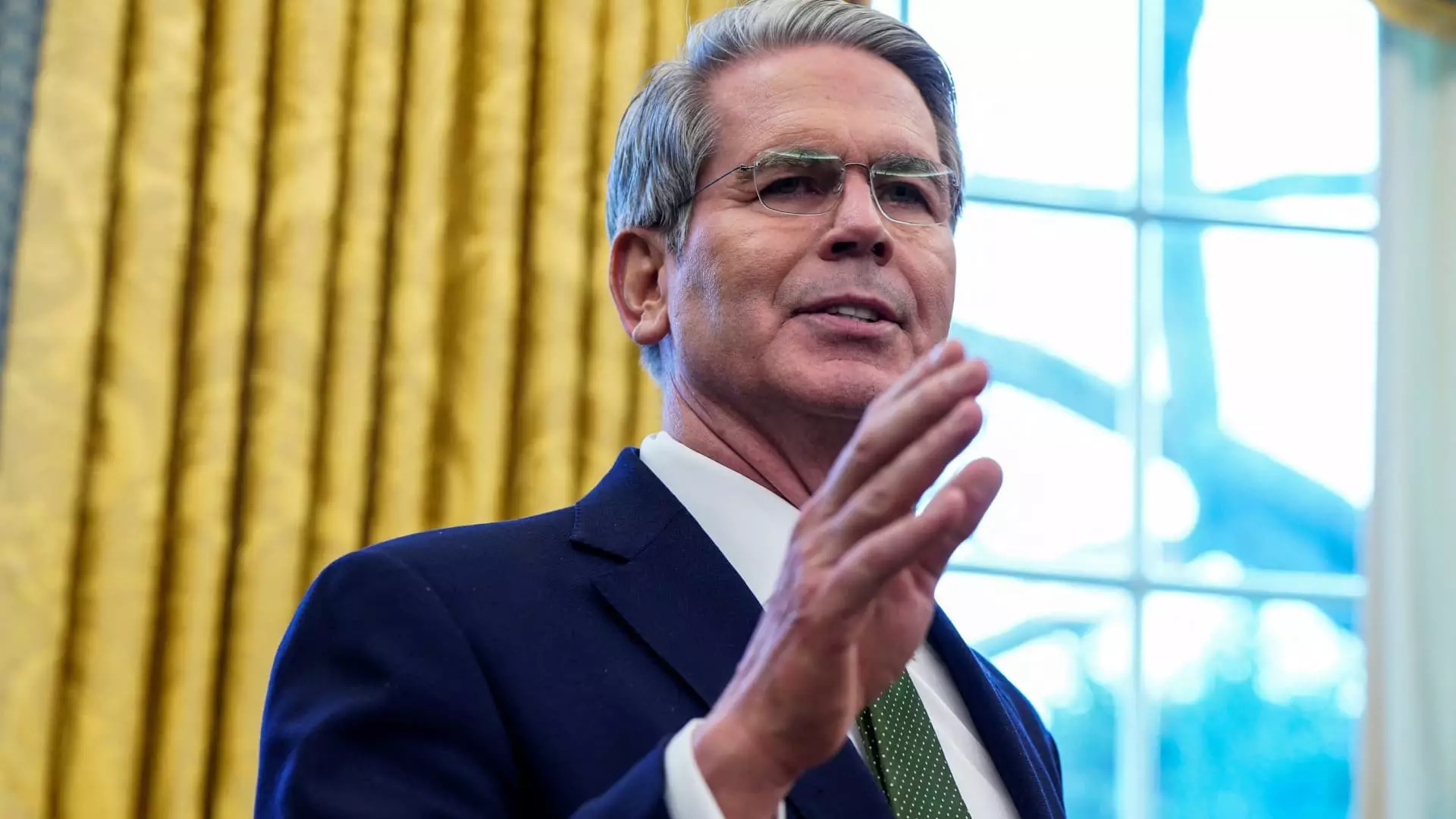In a notable departure from previous approaches to monetary policy, the Trump administration, through Treasury Secretary Scott Bessent, has signaled a clear priority: the management of Treasury yields, particularly the 10-year Treasury note, rather than direct involvement in Federal Reserve interest rate decisions. This shift reflects a broader strategic pivot, emphasizing fiscal measures rather than relying solely on the Fed’s monetary framework. Bessent articulated that the administration aims to leverage fiscal tools to manipulate Treasury yields, believing that a focus on this metric aligns more closely with their economic objectives than the federal funds rate historically targeted by the central bank.
This strategy stems from Trump’s long-standing pursuit of lower interest rates, which he believes are essential for fostering economic growth and stimulating investment. Bessent’s comments during a recent interview underscore this sentiment, indicating that the administration is carefully monitoring the yields on Treasury securities as a gauge of economic health and stability. Unlike his previous term, where Trump frequently pressured the Fed to cut rates, Bessent reassured stakeholders that the administration is in a phase of less direct interference. The focus has shifted to ensuring favorable conditions in the longer-term yield curve, which influences various consumer and business lending rates, including mortgages and auto loans.
Bessent’s assertion that the administration is now prioritizing the 10-year Treasury yield over the more traditional federal funds rate marks a significant philosophical and practical shift. Historically, the federal funds rate has served as a barometer for short-term lending and overall economic conditions; however, the Trump administration seems intent on steering conversations towards longer-term yields, which can often reflect market sentiments about economic growth, inflation expectations, and fiscal stability over time.
The emphasis on this long-term yield can be interpreted as a tactical maneuver aimed at managing economic perceptions rather than merely responding to short-term data. The 10-year Treasury’s yield moved lower by approximately 10 basis points recently, showcasing the administration’s success in influencing yields while also hinting at broader market dynamics characterized by increased investor caution amid changing economic conditions.
The nexus of fiscal policy measures set forth by the administration, such as the proposed permanence of the Tax Cuts and Jobs Act, reflects a multi-pronged approach to economic governance. By advocating for deregulation and energy resource exploration, the administration believes it can create an environment that not only lowers borrowing costs but also enhances economic growth prospects overall.
Bessent identified the aim to streamline government spending and improve operational efficiencies as fundamental strategies for cultivating a favorable interest rate environment. This focus on reducing governmental fiscal burdens complements broader economic goals, fostering a climate conducive to private sector investment and consumer confidence.
However, it is crucial to recognize the inherent risks associated with such a focused strategy. The administration’s reliance on maintaining low Treasury yields could inadvertently spur inflationary pressures if unchecked. As markets responded to the Fed’s rate cuts with increased Treasury yields, the economic landscape remained volatile, posing potential challenges to the administration’s broader objectives.
The dynamics surrounding the 10-year Treasury yield serve as both a barometer for economic sentiment and a political tool. Recent assessments indicated that the yield trading at around 4.45% shows a decrease from previous peaks, suggesting successful management in the eyes of the administration. Analysts, including Krishna Guha, note that the effort to prevent the yield from exceeding 5% is critical; crossing that threshold could lead to adverse effects not only on equities but also on sectors sensitive to interest rates such as housing.
Moreover, Trump’s agreement with the Federal Reserve’s recent decisions has been interpreted as a means of dampening tensions between government and central bank, signaling to markets that collaboration, rather than confrontation, may prevail in future policy discussions. This evolving relationship highlights the need for a cohesive approach to monetary and fiscal policy, one that promotes stability and encourages investment while navigating the complexities of a fluctuating economic landscape.
The Trump administration’s revised strategies surrounding Treasury yields reflect a nuanced understanding of macroeconomic dynamics, where fiscal policy plays a pivotal role. As the administration continues down this path, it will be critical to monitor not only the immediate impacts on yields but also the longer-term implications for economic growth, inflation, and broader market confidence.



Leave a Reply